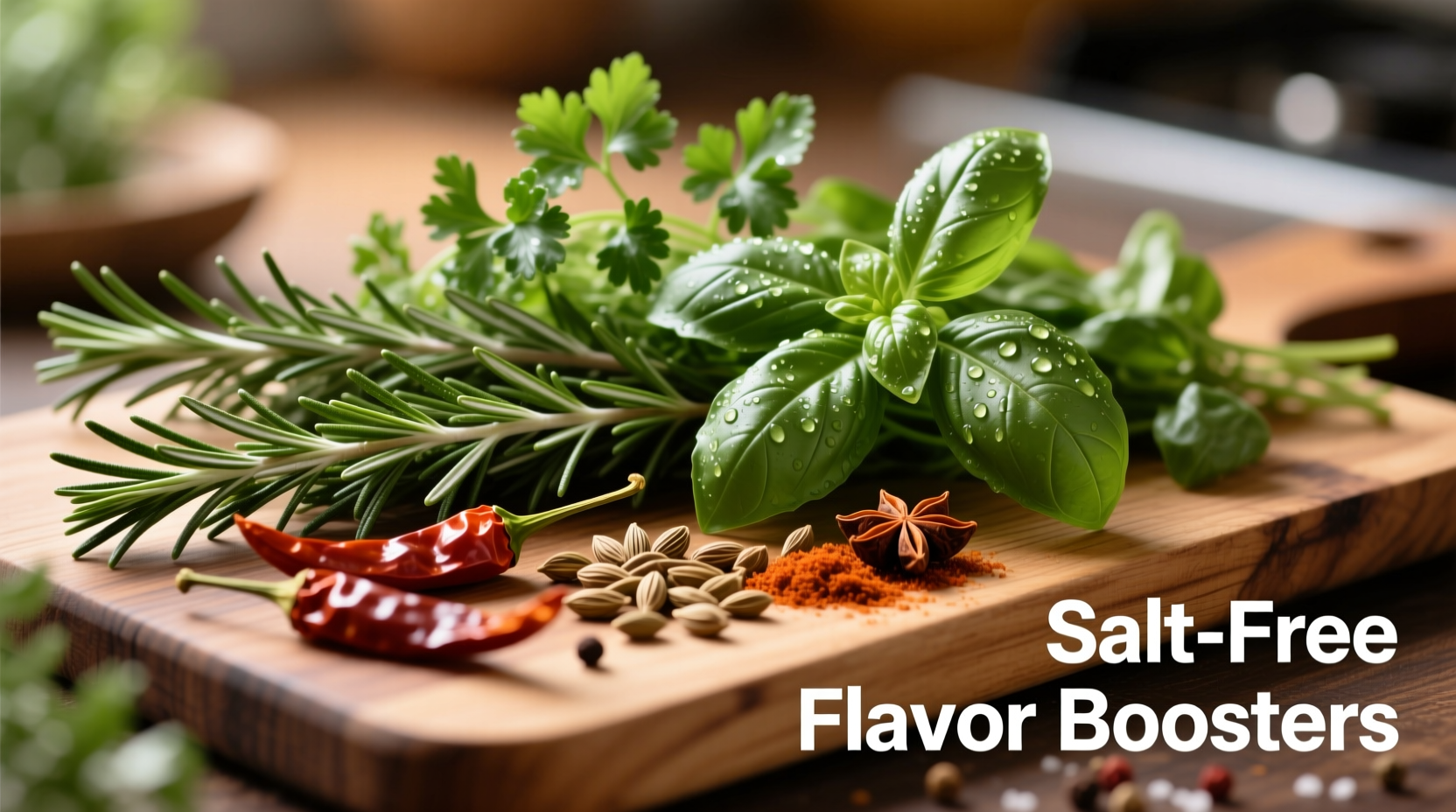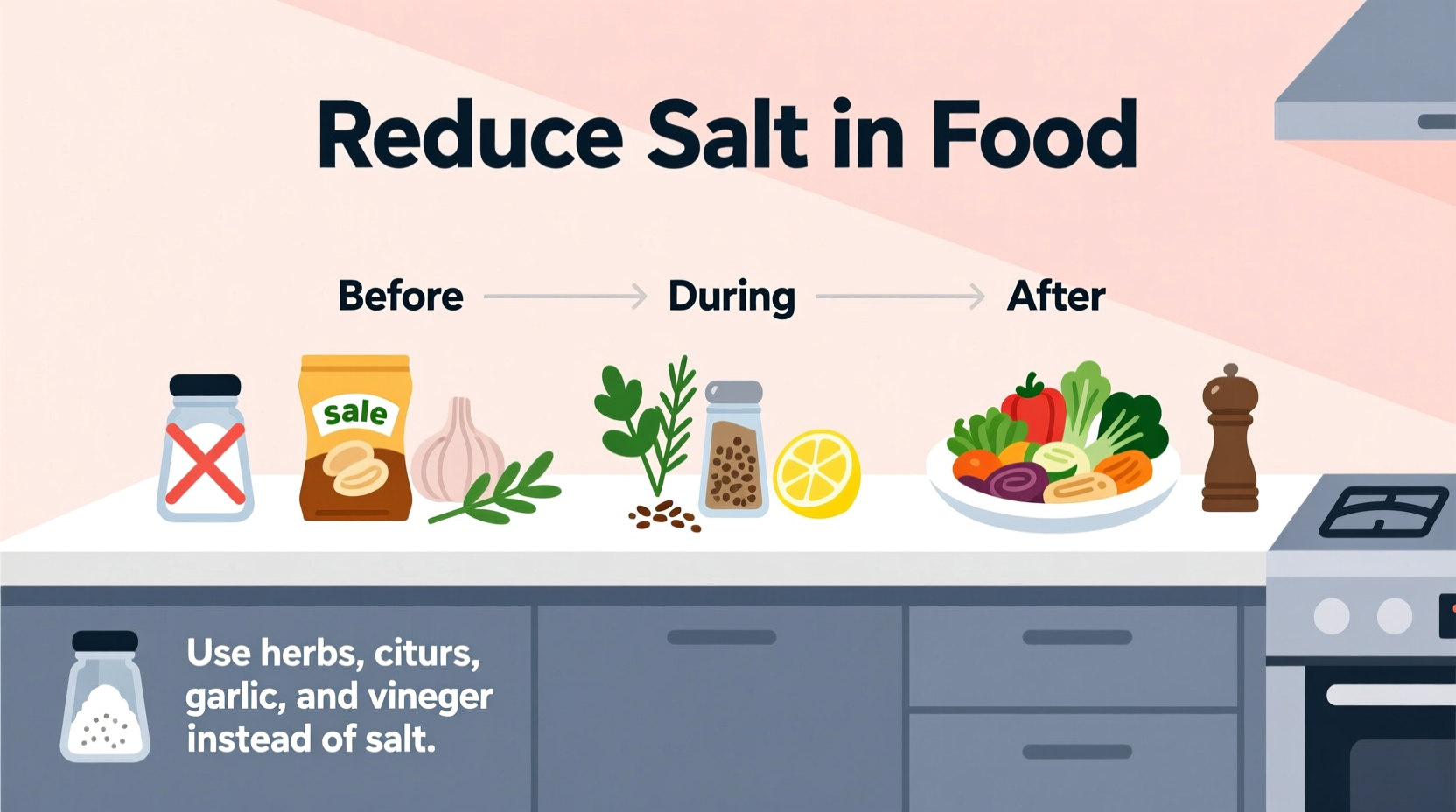Reducing salt in your diet doesn't mean eating bland food. With strategic flavor substitutions and cooking techniques, you can significantly lower sodium intake while actually enhancing your meals' complexity and enjoyment. The American Heart Association recommends no more than 2,300 mg of sodium daily (about 1 teaspoon of salt), with an ideal limit of 1,500 mg for most adults—yet the average American consumes over 3,400 mg daily, primarily from processed foods and restaurant meals.
Why Your Palate Can Adapt to Less Salt
Your taste buds aren't fixed—they're remarkably adaptable. Research from the National Institutes of Health shows that within 4-8 weeks of gradually reducing salt, your sodium preference decreases significantly. This biological adaptation means foods that once seemed perfectly seasoned will eventually taste overly salty.
| Week | Salt Reduction | Flavor Enhancement Strategy | Expected Taste Perception |
|---|---|---|---|
| 1-2 | 25% less | Add citrus zest to dishes | Slightly less salty, but noticeable difference |
| 3-4 | 35% less | Incorporate fresh herbs early in cooking | More complex flavors emerge |
| 5-6 | 45% less | Use umami boosters like mushrooms | Original salt level now tastes too strong |
| 7-8 | 50% less | Experiment with global spice blends | Full flavor satisfaction with less sodium |
This adaptation timeline, verified through multiple studies including research published in the American Journal of Clinical Nutrition, demonstrates that consistent, gradual reduction works better than abrupt elimination. Trying to eliminate salt overnight often leads to disappointment and abandonment of the effort.
Practical Flavor Enhancement Techniques That Work
Master the Acid Balance
Acids like lemon juice, lime juice, or vinegar don't just add tartness—they actually enhance other flavors and create the perception of saltiness without sodium. The USDA's FoodData Central shows that adding just 1 tablespoon of lemon juice (1.5 mg sodium) can make a dish taste as satisfying as one with 1/4 teaspoon of salt (575 mg sodium).
Professional chefs use this technique in three strategic ways:
- Finishing acidity: Add citrus or vinegar in the last 5 minutes of cooking to preserve bright flavor notes
- Marinade component: Combine acids with herbs to penetrate proteins before cooking
- Condiment pairing: Serve dishes with lemon wedges or flavored vinegars for custom adjustment
Build Flavor Layers with Aromatics
Instead of relying on salt for flavor foundation, create depth with aromatic vegetables. The "holy trinity" of mirepoix (onions, celery, carrots) or the Cajun "holy trinity" (onions, celery, bell peppers) builds complex flavor compounds during cooking that satisfy the same neurological pathways as salt.
For maximum impact:
- Sauté aromatics slowly over medium-low heat until deeply caramelized (15-20 minutes)
- Add garlic in the last 5 minutes to prevent bitterness
- Include leek greens or scallion tops for additional flavor dimension

Strategic Use of Umami-Rich Ingredients
Umami—the fifth taste—creates savory satisfaction that reduces salt cravings. Incorporate these low-sodium umami boosters:
- Nutritional yeast: Adds cheesy flavor with only 20 mg sodium per tablespoon
- Mushrooms: Especially dried shiitakes, which contain naturally occurring glutamates
- Tomato paste: Concentrated tomatoes add depth with minimal sodium
- Miso paste: Use white miso (lower sodium than red) in dressings and marinades
Smart Salt Substitution Guide for Common Dishes
When reducing salt in specific dishes, these targeted approaches yield the best results:
For Soups and Stews
Instead of salt, add:
- 1-2 strips of kombu seaweed during simmering (remove before serving)
- 1 tablespoon tomato paste caramelized before adding liquids
- 1 teaspoon smoked paprika for depth
For Roasted Vegetables
Before roasting, toss vegetables with:
- 1 tablespoon balsamic vinegar
- 1 teaspoon garlic powder
- 1 tablespoon nutritional yeast
Reading Labels Like a Pro: Hidden Sodium Sources
Processed foods contain surprising sodium levels. When shopping, watch for these hidden salt sources:
- Bouillon cubes: One cube often contains 800-1200 mg sodium
- Canned beans: Rinsed low-sodium versions have 50% less sodium than regular
- "Healthy" breads: Some contain 200+ mg per slice
- Breakfast cereals: Even sweet varieties can be high in sodium
The CDC reports that 70% of our sodium comes from processed and restaurant foods, not from the salt shaker. Focus your reduction efforts where they'll have the most impact.
When Salt Reduction Requires Professional Guidance
While reducing salt benefits most people, certain medical conditions require specific sodium management:
- People with heart failure may need stricter limits (consult your physician)
- Those with certain kidney conditions might require different approaches
- Athletes in extreme conditions may need electrolyte monitoring
Always consult a registered dietitian or healthcare provider before making significant dietary changes if you have underlying health conditions.
Maintaining Your Low-Sodium Success Long-Term
The most successful salt reducers create sustainable habits rather than temporary fixes. Implement these strategies:
- Keep a flavor journal noting which substitutions work best for different dishes
- Create signature spice blends for your most-cooked meals
- Gradually reduce salt in your go-to recipes over multiple cookings
- Educate family members about the health benefits to gain support
Remember that restaurant meals typically contain 2-3 times more salt than home cooking. When eating out, request sauces and dressings on the side and ask for dishes to be prepared without added salt.
Putting It All Together: Your 30-Day Salt Reduction Plan
Start with these actionable steps today:
- Remove the salt shaker from your table to reduce automatic use
- Purchase one new spice (like smoked paprika or citrus-infused salt)
- Cook one meal this week using the "no added salt" approach
- Read labels on your 3 most-used packaged products
- Experiment with one acid-based finishing technique
Within a month, you'll notice enhanced flavor appreciation and likely experience reduced bloating and more stable energy levels. The key is patience and persistence—your taste buds will adapt, and you'll discover a whole new world of flavor complexity beyond salt.











 浙公网安备
33010002000092号
浙公网安备
33010002000092号 浙B2-20120091-4
浙B2-20120091-4